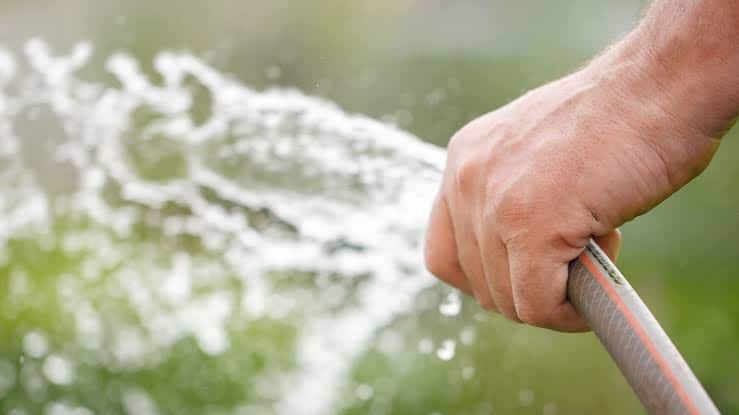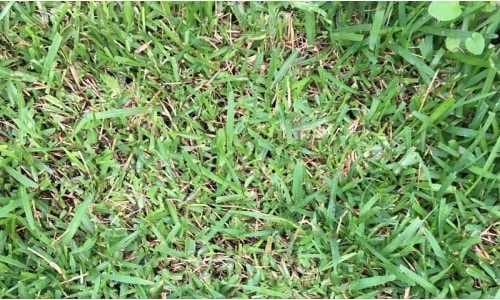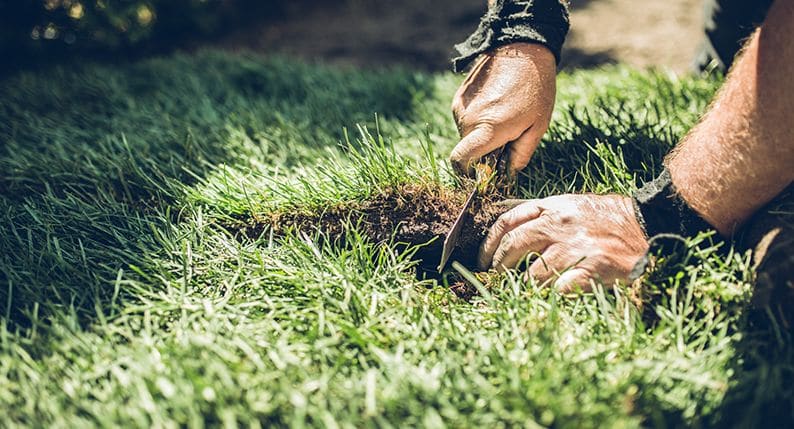
Drought Tolerant Lawns
Your lawn needs water.
And, as you would have noticed during this drought, lawns get stressed or damaged when they don’t get enough water.
Quick Links
An early sign of drought stress is a change of colour but might notice tyre and foot prints remain on your lawn. So, how can we help our lawns cope with this?
It starts with choosing a drought-tolerant lawn. Most lawn varieties in Australia will have a degree of drought-tolerance but Sir Grange is by far the best.
Nullarbor Couch or Platinum Zoysia are also excellent choices in terms of drought tolerance.
A drought-tolerant lawn will be able to withstand high heat levels and an absence of moisture for a long time.
They will also adapt to drought conditions well and bounce back once conditions normalise.
You can also train your lawn to drought tolerant.
This will also mean your lawn requires less watering, saving time and effort as well. In order to condition your lawn, you will need to water deeply and only when your lawn needs.
This will force the grass roots to grow deeper in search for water.
The roots will then have grown below the evaporation level of the soil. You should also mow a little higher as the extra length will help protect the soil from too much evaporation.
The extra blade will also allow for more photosynthesis and provide more food, assisting your lawn through stress.
Prepare your lawn for summer, it’s going to be a scorcher!
Making your lawn drought tolerant is a must in our climate and it can be as simple as changing how you care for it.

What is the Best Drought Resistant Grass?
One of the main considerations for Australians choosing a new lawn is whether it’s a drought resistant grass or not.
We all want a lawn that will stay greener for longer, even in extreme heats, and will also recover quickly after the extreme conditions are over.
As well as choosing a lawn that is naturally drought tolerant, you can also train your grass to withstand drought conditions better.
The key to developing your lawn’s drought resistance is to encourage a deep root system.
Choosing a Drought Resistant Grass
Finding the lawn variety that suits you best is not a task to take lightly and of course, there is a range of factors to take into consideration.
However, if having a lawn that is better equipped for drought conditions is a key factor for you, then a Couch grass may be your best choice.
Zoysia grass and Buffalo varieties also have a natural resistance to drought conditions.
Couch
Couch varieties, such as TifTuf, are the best choice of turf for areas that suffer extreme stress during drought.
Studies have shown that TifTuf will remain green for longer in prolonged drought conditions and will produce more roots and rhizomes than other Couch varieties.
TifTuf is a Bermuda-Couch hybrid that requires less water throughout the year and has a quick recovery if it is damaged from heat and lack of water.
Zoysia
Zoysia grasses, such as Sir Grange, also require less water throughout the year. As they are slow growing, they also require less maintenance altogether.
Similar to TifTuf, Sir Grange lawns have underground runners which help them to recover faster from drought damage.
Buffallo
Buffalo grass varieties, such as DNA Certified Sir Walter, are able to tolerate full sun as well as being shade tolerant.
Of the turf types, Sir Walter is one of the most versatile, however, if your lawn is primarily exposed to sunlight throughout the day, TifTuf is a better grass type for drought tolerance.

Preparing Your Lawn for Drought Conditions
In order to build up your lawn’s drought resistance, you need to encourage a deep root system.
Watering
Less frequent, deep watering. Watering like this throughout the year will encourage a deep root system.
This practice mimics natural rainfall and forces roots to grow deeper, searching for water. Excessive watering will only encourage disease.
This is done by watering deeply and infrequently. As your lawn stops receiving frequent water from rain or your sprinkler, its roots will grow deeper into the soil in search of water.
By making this a standard practice, your lawn will be prepared once a drought hits. When it does, having roots beneath the evaporation level of your soil will greatly benefit the health of your lawn.
Mowing
Keep lawn height as high as possible.
Of course, you shouldn’t let your lawn get out of control or let weeds take over but keeping your lawn height a little taller will allow it to retain moisture and allow for more photosynthesis.
You can also raise your mowing height to help insulate the soil from evaporation.
The extra length in your grass blades will also allow for more photosynthesis, proving more food during this time of stress.
Keep your mowing blades sharp. Blunt blades will fray your grass which makes it more likely to brown and become further damaged.
Wear & Tear
Reduce wear and tear. Keeping off the lawn as much as possible will help reduce stress.
Aerate
Wait to aerate or dethatch your lawn. These practices are the most stressful for your lawns so hold off on these.
They also encourage disease and insects while your lawn is stressed.
By following these practices in the summer heat and throughout the year, you can help make your grass drought resistant.
Even if we aren’t in a drought, the heat of summer is still difficult for your lawn and may cause it to decline in health.
How Do Water Restrictions Affect Your Lawn?
Currently, Sydney is under Level 1 water restrictions.
These restrictions apply to everyone in the Sydney, Blue Mountains and Illawarra area, both residents and businesses.
Lawn Watering Restrictions
This means you can water your lawn before 10am and after 4pm with a hose (fitted with a trigger nozzle) or a watering can or bucket.
You can still use drip irrigation systems at any time of the day, as you can a watering system with a sensor.
For new lawns, you can water your turf once or twice a day before 10am or after 4pm for a week after it has been delivered.
If your new lawn is bigger than 70m2, you can also use sprinklers and watering systems.
In order to continue using sprinklers and soaker hoses after that first week, you can apply for an exemption permit.
Sources
CSIRO – Water use, water use efficiency and drought resistance among warm-season turfgrasses in shallow soil profiles:
http://www.publish.csiro.au/fp/FP11244
LSA – Looking for a more drought tolerant grass?
https://lawnsolutionsaustralia.com.au/lawn-care/drought-tolerant-grass/

Neale Tweedie
Turf Farmer
Neale Tweedie, an experienced operations manager, turf farmer and irrigation services and design specialist with an extensive history in the turf supplies, farming and irrigation industry.
Neale Tweedie is a current board member of Turf NSW, and Turf Australia (Treasurer) and has formal education in Horticulture focused in Agricultural and Horticultural Plant Breeding.
Neale Tweedie is also the owner and General Manager of Atlas Turf, Grechs Turf and Buy Turf Online.

Our Turf
TifTuf Bermuda
Buy Turf Online © 2019 All Rights Reserved. | Proudly Designed and Developed by Sydney ICT


